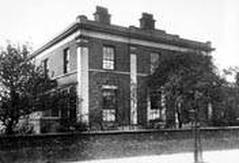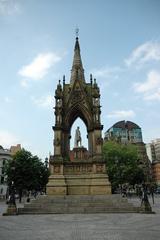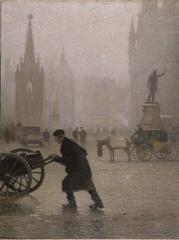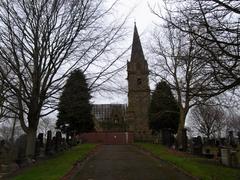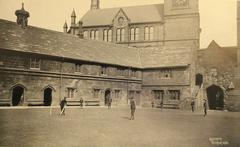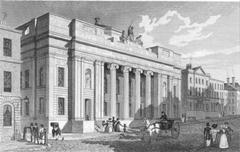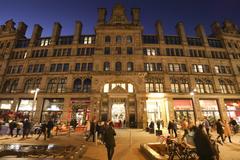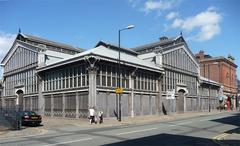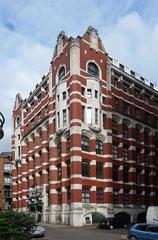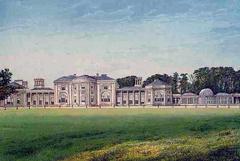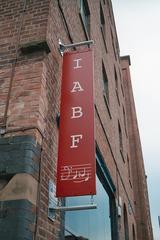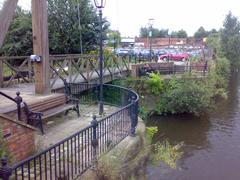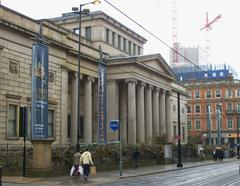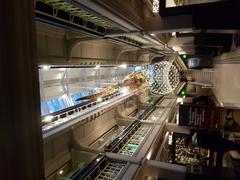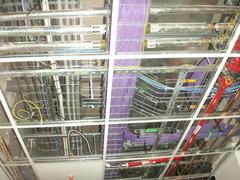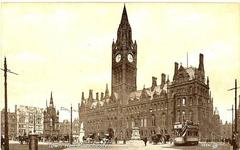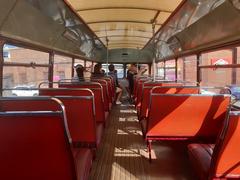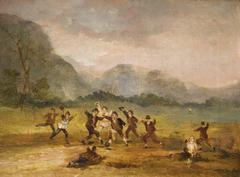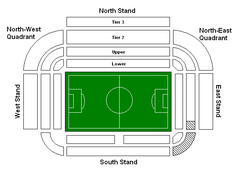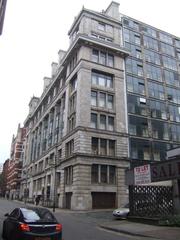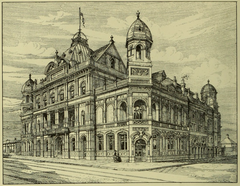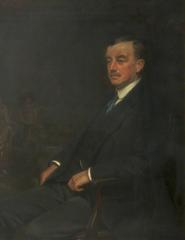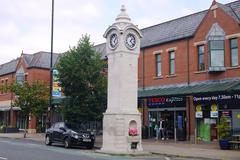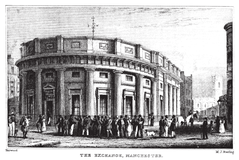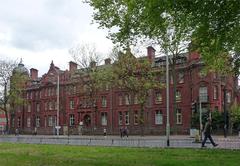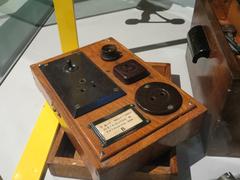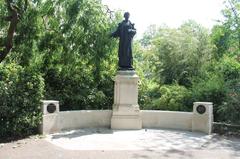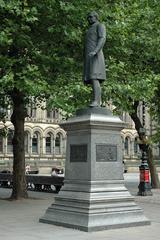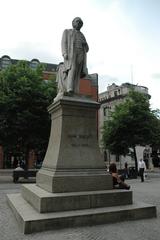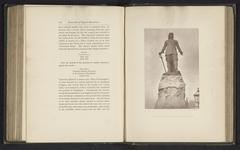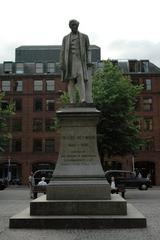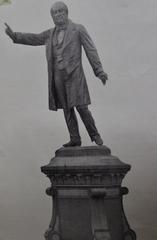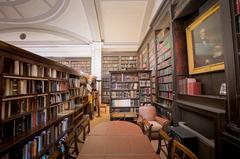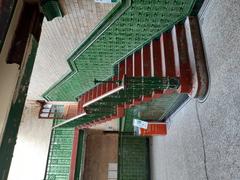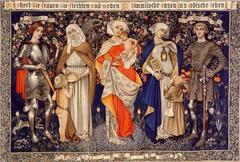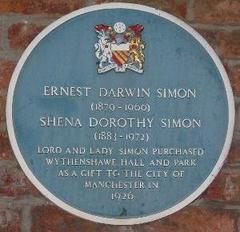Gorton House Visiting Hours, Tickets, and Historical Sites in Manchester
Date: 14/06/2025
Introduction to Gorton House and Its Significance
Nestled within the leafy expanse of Debdale Park, Manchester, Gorton House is a striking emblem of the city’s industrial heritage and Georgian architectural tradition. Built in the late 18th century by industrialist Robert Grimshaw, the house reflects the ambitions of Manchester’s early innovators and stands as a testament to the city’s transformation from rural landscape to industrial hub. Its elegant Georgian façade and deep ties to textile innovation make Gorton House a meaningful landmark in the story of Manchester’s Industrial Revolution.
Though Gorton House has endured periods of neglect and structural decline, sustained community advocacy and ongoing restoration efforts have ensured its preservation as an important heritage site. Today, while the building itself remains closed due to conservation work, visitors can explore its exterior, the surrounding parkland, and local trails, gaining insights into the area’s rich history. This guide provides all the essential information for your visit—including opening hours, ticketing, accessibility, transport options, and nearby attractions—alongside a detailed look at Gorton House’s architecture, history, and ongoing regeneration.
For further reading and updates, consult the Gorton Heritage Trail, Manchester Evening News, and Visit Manchester.
Contents
- Introduction
- History and Architectural Significance
- Georgian Origins and Design
- Estate Layout and Historical Context
- Conservation and Listing Status
- Visiting Information
- Opening Hours & Ticketing
- Accessibility & Travel
- Visitor Experience
- Guided Walks & Events
- Photographic Spots
- Nearby Attractions & Heritage Sites
- Restoration and Regeneration
- Decline and Community Mobilisation
- Restoration & Adaptive Reuse
- Future Prospects
- Visitor FAQs
- Summary and Visitor Tips
- Sources
History and Architectural Significance of Gorton House
Georgian Origins and Design
Constructed between 1788 and 1792 by Robert Grimshaw, Gorton House is a classic example of Georgian country house architecture. The red-brick façade, symmetrical proportions, sash windows, and Ionic doorway are characteristic of the era’s refined style. The interior originally featured distinct family and service areas, with period details such as a top-lit staircase, fireplaces, and stone-flagged floors still surviving in part (Historic England; Gorton House Leaflet PDF).
Estate Layout and Historical Context
Gorton House once stood at the heart of a substantial estate, accessed via lodges on Hyde Road and near the Stockport branch canal. The surrounding grounds were later altered by the construction of the country’s first municipal reservoirs, supplying water to Manchester. Grimshaw’s pioneering role in introducing the power loom to Manchester is central to the house’s story, despite the tragic destruction of his mill by arson and his ensuing financial ruin (Gorton House Leaflet PDF).
Conservation and Listing Status
Recognised for its historical importance, Gorton House is Grade II listed, offering protection from unsympathetic changes. However, decades of neglect led to significant deterioration, resulting in the building’s closure and inclusion on heritage at-risk registers (Manchester Evening News).
Visiting Gorton House: Hours, Tickets, and Access
Opening Hours and Ticketing
Is Gorton House Open to Visitors?
As of June 2025, Gorton House remains closed due to ongoing restoration and safety concerns. There is no public access to the interior, and no tickets are required or issued for tours. The exterior can be freely viewed from within Debdale Park during park opening hours, which are from dawn until dusk (Gorton Heritage Trail).
Guided Walks and Events
While the house itself is closed, local heritage groups and the Friends of Debdale Park occasionally organise guided heritage walks and talks that include Gorton House as a highlight. These events are generally free and open to all, but check local event listings for details and availability.
Accessibility
- Park Paths: Main paths in Debdale Park are wheelchair- and pushchair-accessible.
- Near the House: Terrain around the house may be uneven; visitors should take care.
- Facilities: Public toilets, a café, and play areas are available within Debdale Park.
Getting There
- Location: Off Hyde Road in Debdale Park, east Manchester.
- Public Transport: Buses run along Hyde Road; Belle Vue train station is a 15-minute walk away.
- Parking: Free parking at Debdale Park’s main car park.
- Cycling: Bike racks provided near park entrances.
Visitor Experience: What to See and Do
Photographic Spots
Gorton House’s Georgian façade, flanked by mature trees and historic parkland, offers superb photographic opportunities—especially during the early morning or golden hour. The grounds and adjacent reservoirs provide additional scenic backdrops.
Community Activities
Debdale Park is a lively community space, with yoga classes, arts exhibitions, gardening clubs, and cycling projects hosted at the nearby nature centre (Manchester Evening News).
Explore the Gorton Heritage Trail and Local Historical Sites
Gorton Heritage Trail
A two-mile circular route starting at Debdale Park, the Gorton Heritage Trail features nine listed buildings and numerous historical points, such as:
- Maiden’s Bridge (1737): Picturesque Grade II-listed bridge.
- Brookfield Unitarian Church: Victorian-era church built by industrialist Richard Peacock.
- Gore Brook Valley Conservation Area: For nature and history enthusiasts (Gorton Heritage Trail).
Interpretive signs along the trail provide rich historical context for self-guided walks.
Debdale Park Reservoirs
Constructed in 1821, these were England’s first municipal reservoirs. Today, they are used for recreational activities such as sailing and fishing (Gorton House Leaflet PDF).
Gorton Market
Open Monday to Saturday, the vibrant Gorton Market is a great place to experience local culture and buy fresh produce (Master Manchester).
Restoration and Regeneration of Gorton House
Decline and Community Mobilisation
Like much of Gorton, the house suffered neglect in the late 20th century, compounded by industrial closures and urban change (Manchester Evening News). The situation became critical in the 1990s, with the building threatened by vandalism and dereliction.
Inspired by the successful campaign to save Gorton Monastery, local groups lobbied for Gorton House’s preservation, securing its listed status and attracting funding for urgent repairs (BBC Manchester).
Restoration & Adaptive Reuse
Restoration has focused on stabilising the structure and exploring adaptive reuse, such as community spaces, event venues, and heritage education facilities (Manchester Evening News). Local involvement has been central, with volunteers participating in clean-ups, fundraising, and educational programs.
Future Prospects
Gorton House is now positioned as a heritage anchor in the city’s broader regeneration masterplan, which includes new housing, improved public spaces, and community hubs (Manchester’s Finest). The building’s restoration is expected to bring increased visitor interest, cultural programming, and economic opportunities while ensuring its long-term sustainability (Place North West; Manchester City Council).
Visitor FAQs
Is Gorton House open to visitors?
No, the house is closed due to structural concerns. The exterior may be viewed from Debdale Park.
Are tickets needed?
No tickets are required for viewing the exterior or for joining most guided walks.
Are guided tours available?
No regular interior tours, but guided heritage walks in the park are occasionally organised.
What are the hours?
Debdale Park is open daily from dawn until dusk.
Is the area accessible?
Park paths are accessible, but terrain near the house may be uneven.
Can I take photographs?
Yes, photography of the exterior and park is encouraged.
Visitor Tips
- Check local news or the Friends of Debdale Park for updates on restoration and events.
- Combine your visit with the Heritage Trail or Gorton Market for a fuller experience.
- Respect safety barriers—do not attempt to enter Gorton House.
- Engage with community activities or volunteer to support ongoing preservation.
- Use sustainable transport options where possible.
Summary
Gorton House is a landmark of Manchester’s industrial and social history, with its Georgian elegance and compelling backstory offering insight into the city’s transformation. Although the building itself remains closed, visitors can appreciate its exterior, enjoy Debdale Park, and explore nearby heritage trails. Continued community commitment and restoration efforts promise a vibrant future for this important site. Stay informed through official channels, participate in local events, and support preservation where possible.
Sources and Further Information
- Gorton Heritage Trail
- Protect This House: Gorton House – Manchester Evening News
- Things to See and Do: Heritage and History – Visit Manchester
- Gorton House Leaflet PDF – Local History Archive
- Gorton Restoration Feature – BBC Manchester
- Historic England – Gorton House Listing
- Master Manchester – Best Markets in Manchester
- Manchester’s Finest – Gorton Housing Vision
- Place North West – Gorton Playing Fields
- Manchester City Council – East Manchester Regeneration
- History Hit – Best Historic Sites in Greater Manchester
- Secret Manchester – Heritage Sites
- Guard Mark – Manchester Safety Tips
